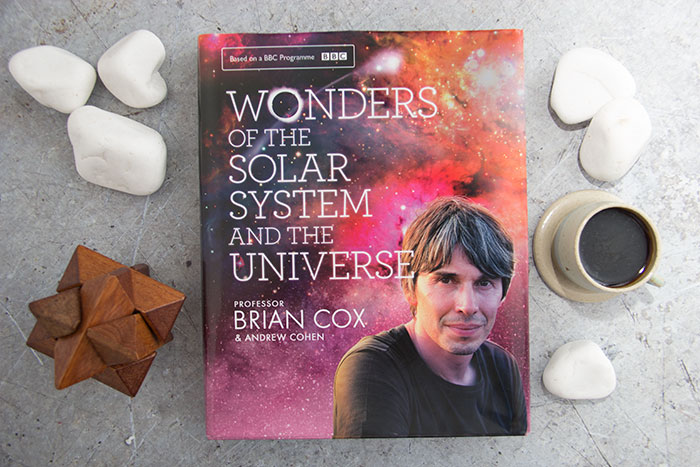Wonders of the Solar System and the Universe by Brian Cox
I bought the book Wonders of the Solar System and the Universe by Brian Cox and Andrew Cohen for my husband. He is interested in astronomy and physics. He was telling me things he was reading in the book, so I wanted to know more.

Because there are many amazing pictures in the book, alongside graphs, it’s really easy to understand and follow the subject. I liked how the book is made, in a commercial way, for everybody to be able to enjoy it, while learning about the Universe. I think because it’s written like that, the book can be appealing to an younger audience, like teenagers.
It is structured in 2 parts. The first 6 chapters are dedicated to the sun, the solar system, and the Earth. In the book, Cox also talks about other planets and their satellites. It was very interesting to see so many details about them. The second part has 4 chapters, from light, cycle of life, to the future of the Universe.
I’m going to share a few facts I found fascinating in the book. First of all Europa, the moon orbiting Jupiter, orbits the planet in three days and a half and it’s made of ice. It has a surface temperature of -160C (I looked in the book again to see the exact temperature). Underneath the ice there is a liquid ocean, on top of a metal core. Because the Europa moon is so close to Jupiter, on its orbit is stretched and squashed as it gets closer or further away the planet. This friction will melt the ice in that liquid ocean. As with our Moon, Europa and Jupiter are tidally locked.
In the second part, the timeline of the Universe, from the Big Bang to the present is very interesting. It continues to talk about the chemical elements. He talks about how stars are formed and their life cycles. And about our life cycle, including the interesting diagram entitled “Galactic Clock”.
The final idea I’m going to blog about is the life cycle of the Universe. There are three theories at the moment. The Big Bounce or the idea that there is a cyclical repetition: Big Bang – Galaxies – Contraction – Singularity. The second one is the Big Crunch, the Universe will re-collapse, ending as a black hole. The last one is Multiverse, as the name suggests, an infinite number of simultaneously expanding Big Bangs.
I thought, even before reading the book, that Big Bounce must be the real one. Of course, nothing is certain.
Do you wander what do you hear at the radio when is white noise? Well, if you read the book you will discover.
Wonders of the Solar System and the Universe by Brian Cox
Details about the picture: Coffee in a stonewear cup, a wooden puzzle, and rocks, three things that must represent the Universe and its wonders.
My rating: 4.5/5 Stars.
Would I recommend it: Yes
Published by: William Collins
Year it was published: 2015
Format: Hardcover
Genre(s): Non-Fiction
Pages: 508
About the authors:
Professor Brian Cox is a particle physicist. He teaches at the School of Physics and Astronomy in the University of Manchester. Cox studied at the University of Manchester. He often appears at the BBC at different TV shows, including Wonders of the Solar System.
Andrew Cohen is Head of the BBC Science Unit. He was Executive Producer of the BBC series Human Universe. He is an honorary lecturer in Life Sciences at the University of Manchester. Lives in London.
Website & Social Media Links: briancoxstore.com

My father is also very passionate about astronomy. He already read almost 15 books related to astronomy. His favourate book is -NightWatch: A Practical Guide to Viewing the Universe.
Do check it out, I am sure your husband would love it!!!!
Cheers